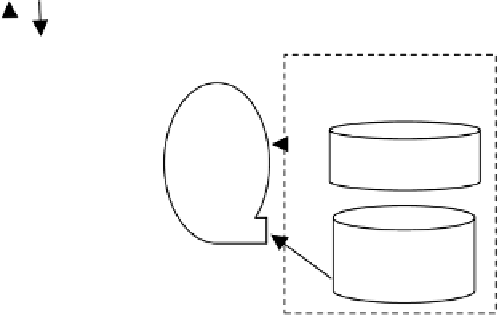Information Technology Reference
In-Depth Information
The core of the system will consist of a generalised kernel for cellular automata
management (“
ACKer
”). Such a kernel will be automata execution and elaboration
engine, according to the rules and following instructions given through a scripting
language designed for the purpose.
Alternatively, it will be possible to access the CA database and to programme
class library (CA-SDK - Cellular Automata Software Development Kit).
At the front-end of such an architecture, generalised or purpose-oriented user
interfaces can be developed.
The following figure illustrates schematically the outlined architecture.
Interface 1
Interface 2
Interface n-1
Interface n
CA Scripting Language (
ACELL
)
Programming language
development (C++)
with use of CA-SDK
library (
ACLIB
)
Automata Management Kernel
(
ACKER
)
Cellular Automata Database
External data
sources
Data
conver-
sion
GIS
Transi-
tion rules
Scena-
rios
Relational
Databases
Fig. 2.
The general architecture
Let us spend some words on few elements of the above scheme.
Interfaces.
These are user-friendly interfaces developed
ad hoc
for the treatment
of particular problems. They could be of a generalised kind - allowing the definition,
management and execution of traditional “generalised” automata -, but could also be
stand-alone applications that make use of particularly designed automata e.g. for the
purpose of a gaming simulation. The interfaces can be developed such as to interact
with the database through the kernel (ACKER), using the scripting language
(ACELL), or can be directly developed using the cellular automata SDK libraries.
Scripting Language
ACELL.
Working in tight relation with the kernel, the
scripting language should put at users disposal a set of commands, functions, data-
1
Initially the library will be developed for use in C++ programming language.




























